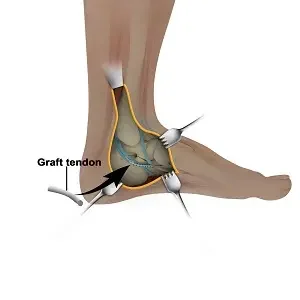POSTERIOR TIBIAL TENDON REPAIR
If you need a Posterior Tibial Tendon Repair, please Schedule an appointment with one of our orthopedic specialists as soon as possible.
What Is Posterior Tibial Tendon Repair?

Posterior Tibial Tendon Repair Procedure
The surgical procedure for repairing a damaged posterior tibial tendon involves administering general or regional anesthesia for comfort. An incision on the inner ankle grants access to the tendon. The surgeon examines the injury’s extent, evaluating surrounding tissues and bones. Using specialized sutures or anchors, the torn tendon is repaired. Adjacent soft tissues, ligaments, or bones may require adjustment for proper alignment. After completing the repairs, the incision is closed with sutures, and the site is bandaged for healing. This comprehensive approach aims to address the injury’s root cause, ensuring a successful recovery while minimizing discomfort for the patient.
Rehabilitation and Therapy

